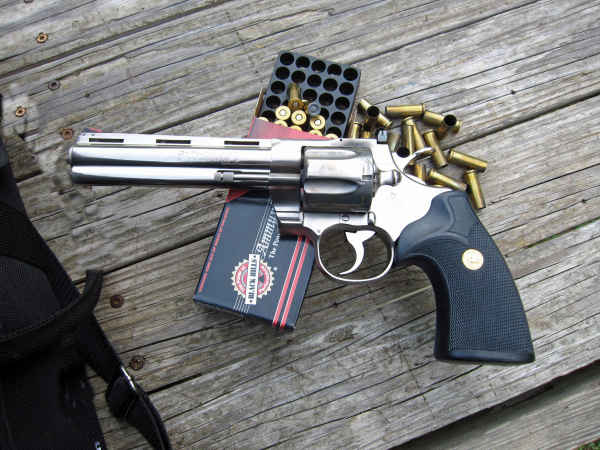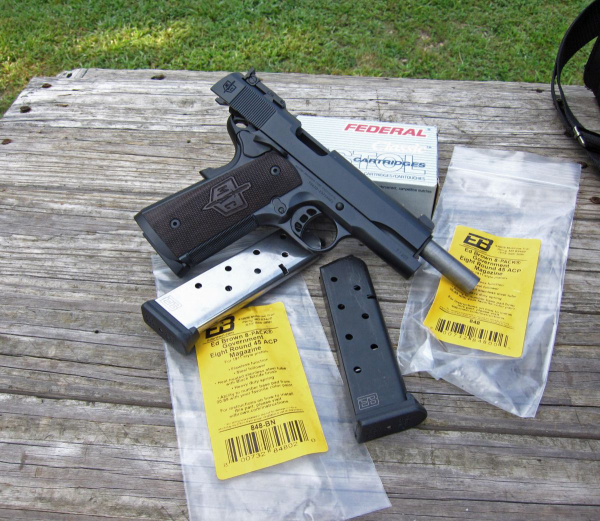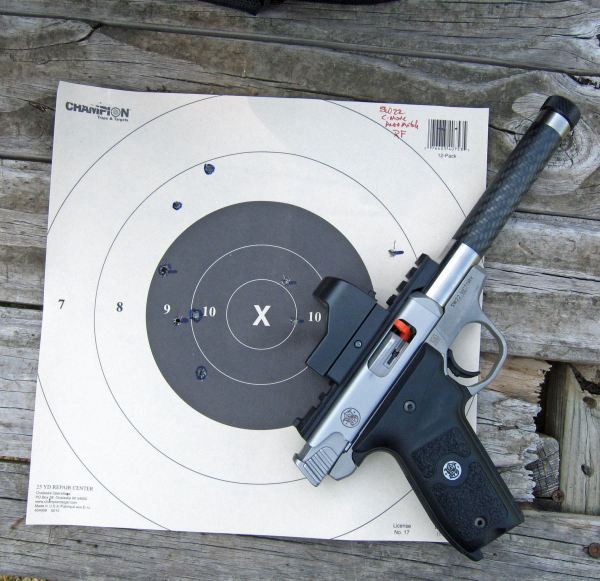I recently had custody of an elder relative’s Colt Python. A six-inch revolver, it was from the early 1980s, silvery in color, it was purchased with the Colt Medallion Pachmayr stocks. "Royal Coltguard" was their name for electroless nickel – a chemically applied finish that was applied directly to the base metal. Conventional nickel finishes were placed over an application of copper. While not as hard as hard chrome, the electroless nickel applies into tight places and still has considerable abrasion resistance. It’s likely also better at corrosion resistance and doesn’t flake like electro-nickel.

Having it here – and having reinstalled the factory-supplied stocks – I compared it to my old Python, my first centerfire handgun, manufactured in 1968. Aside from the finish and stocks, the 1981 Python had a white outline around the rear sight notch of the Accro sight and a red insert in the ramp front sight.
Failing to remember You Can't Go Home Again, a warning from Thomas Wolfe, I wondered how well I could shoot the 1980s cannon. I’d used my older Python at my only appearance on my first agency’s pistol team at the state peace officers’ association Spring convention – 45 years ago. I won the “Novice” award by a single point, as I recall.
As I’d been shooting a little bullseye recently, I thought I’d see how the 1981 Python – and an elderly handler – could match up to the mid-20s kid and the 1960s Python.
To start with the ammo would be better; back then, I loaded bulk 148gr swaged hollow-base wadcutter bullets in mixed brass atop 2.7 grains of the old Bullseye powder. The loading was accomplished on the department’s Star Progressive loader. I don’t recall who made the primers. The outfit provided the machine, a thousand primers a year and the powder. You had to bring brass and bullets.
Now, the ammo would be the superb 148gr. wadcutter load from Black Hills Ammunition. But why stop there?

I still had the MAC JSOC 1911 pistol. Like the “real” JSOC handguns, this is a 45, perfect for the “hardball” event at bullseye. The old box of Federal Classic Auto match 230 grain FMJ would be ideal and the magazines from Ed Brown Products would be welcome as well. I could round it out with a 22 – using bulk pack ammo to make up for the C-MORE optic and the fine trigger on the SW22 Victory pistol, with its Volquartsen barrel.
The targets for slow fire were from the only B-16 center I had; National Match bullseye is shot at fifty yards on a B-6. The B-16, for the slow fire stage at 25 yards, is for ranges without a fifty-yard line – and it was used back in those old days. This was just an old guy revisiting youth, not a real competition.
The difference between the slow fire B-16 and the B-8 is the scoring value; the B-16 has a smaller 10-ring (1.51”) than the sustained-fire B-8 (3.36”).
The targets for timed- and rapid-fire strings are B-8s and I have plenty of repair centers for those stages.

It wasn’t “shooting cold,” as I checked the zero on each gun before shooting. When I finished the slow-fire strings, I’d have failed to win even a “novice” award with the “centerfire” entry. Unlike shooting my elderly Colt Python when I was much younger, my slow fire effort was embarrassing – I owe the folks at Black Hills Ammunition an apology. I ended the course with 213/300, 71%.
I moved to the Tisas-made/MAC marked JSOC 1911. The gun really “doesn’t fit” me, between stocks, mag well and long trigger, it just didn’t “feel right.”
Feeling is irrelevant, “fit” isn’t. The targets told the tale. My slowfire score, again, was a disaster. In timed fire though, I ended with 92/100 and rapid yielded a good (for me) 83/100, for a total of 226/300, 75%.

On to the 22. I’ve had the SW22 Victory nearly 10 years. I think I cleaned it when I put the barrel on about 9 years ago. That’s why there were failures to extract, eject and feed. I had a middling 76 on slow fire. My total came out to 253/300, 84%.
That would terrify no competitors, but I took some satisfaction in that score. I took more satisfaction in getting to spend time on legit sport shooting with three fine handguns.
See? They’re handguns, not hands-guns – as Mike Rafferty has been known to say.
All shots were taken one-handed, strong hand only. Take aways?
For the iron sight guns, sight alignment is vastly more important than sight picture. Keeping the front centered in the rear notch as the sights wander over the bullseye and letting the shot happen during the movement gets points. The tighter your “wobble zone,” the higher the score.
Another – in slow fire, know when not to shoot. Don’t rush it and if you find yourself holding on the target for a long time, take your finger out of the trigger guard, lower to guard and breathe. That’s discipline – something my complete miss with the treasured Python taught me again.
I knew better.
It’s worth it to shoot some deliberate bullseye and work through that discipline. It brings you back to serious observation and reinforcement of fundamentals.
Recreation – it’s good for you.
— Rich Grassi